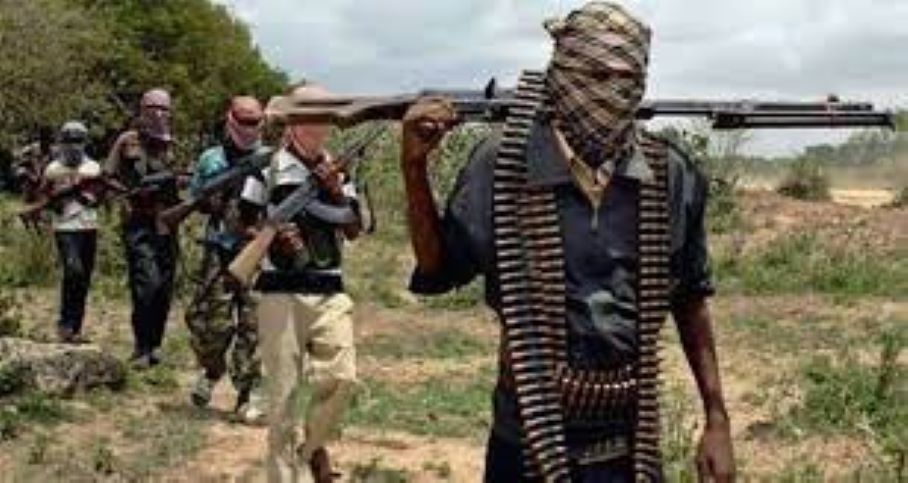By Chesa Chesa
Federal and State governments in the Southeast have been advised to initiate safe corridor programmes for low-risk members of the Non State Armed Groups (NSAGs) as part of long-term measures to address the radicalisation and violence ravaging the region in the past few years.
The safe corridor programmes, which will who target young men and women who may have been forcefully conscripted into armed gangs, should include skills acquisition and psychological/social supports to enable them to reintegrate into society.
This and other recommendations are contained in a Nextier research report titled ‘Southeast’s Belt of Violence: Between Radicalisation and Deradicalisation’, authored by Dr. Chukwuma Okoli, an Associate Consultant at Nextier and a Lecturer at the Political Science Department at Nnamdi Azikiwe University, Awka, Nigeria; and Dr. Ndu Nwokolo, Managing Partner at Nextier and an Honorary Fellow at the University of Birmingham School of Government, UK.
Security agencies have blamed much of the recent violence in the Southeast on “unknown gunmen” and factions of the Indigenous People of Biafra, often seeking to enforce sit-at-home orders meant to force government’s hand to release the group’s leader, Nnamdi Kanu, as well as other miscreants who have hijacked the fragile situation to commit crimes unrelated to any agitation.
Nextier defined the ‘Southeast’s belt of violence’ as a vast area consisting of about 20 interconnected Local Government Areas (LGAs) which form an unbroken forest line that runs through the five Southeast States.
“From Oguta LGA in Imo and Ogbaru LGA in Anambra, it connects Ihiala, Okigwe, Orlu, Umunneochi, Ideato, Orsu LGAs in Imo State with areas Ihiala, Nnewi South, Aguata, Orumba South LGAs in Anambra State. It runs through Oji River, Awgu, and Aniri LGAs in Enugu State, connecting Ebonyi State through Ivo and Afikpo LGAs and then proceeds through Isiukwuato and Bende in Abia State.
“Together, these areas constitute ungoverned spaces in the Southeast which have been appropriated by a network of criminal elements, including spiritual leaders/herbalists who provide spiritual support to the criminal network over the last three years”, he report rated.
Aside the safe corridor, Nextier suggested deepening government presence in the Southeast’s belt of violence as many communities across there do not feel the impact of the government, especially not having access to good healthcare, education, or basic amenities like pipe-borne water, electricity, and the likes that can reduce the impact of propaganda deployed by the NSAGs to win the sympathy of such communities.
It further recommended that part of the soft approaches to the deradicalisation of the Southeast’s belt of violence is to partner with the civil society – including faith-based – and private sector, particularly credible consulting firms that would provide their expertise in knowledge creation on radicalising the target locations and designing effective evidence-based deradicalisation programmes.
In addition, “State security agencies should deepen collaboration with local vigilantes who understand the difficult geographical terrain of the local communities in the Southeast’s belt of violence. This will ensure that innocent civilian populations are not targeted during military operations.
“Apart from the elected state officials, the traditional rulers, Presidents-General of the town unions, the leaderships of women’s unions, the markets associations, and the youth wings play important roles in each autonomous community’s day-to-day governance and security.
“Any effort at achieving sustainable peace and dislodging the NSAGs’ activities must have these organisations’ inclusion and buy-in.
“Providing local intelligence and engaging in activities will lead to behavioural changes and shifting incentives from violence and distrust for the Nigerian state to peace, and trust will come majorly from their participation and engagements”, the report recommended as part of strategic partnerships with local leadership in the region.
Nextier highlighted the fact that the armed groups take advantage of the near absence of state security agencies in the locations to frighten the communities into silence with violence and threats, while in some communities, residents are subjected to extortion and forceful conscription of the youth.
Another factor contributing to the radicalisation in the area “is the prioritisation of kinetic strategies by state security agencies. State security agencies seem to have focused more on using force to decimate the NSAGs in the Southeast’s belt of violence”, the report stated.
It added that “there are also allegations that in states like Imo, some politicians are using the opportunity to intimidate and suppress voters in the strongholds of their political opponents under the guise of destroying camps of the Indigenous People of Biafra (IPOB) and its militant wing – Eastern Security Network (ESN)”.
Nonetheless, Nextier concluded that the current radicalisation in parts of the Southeast is enabled by two factors – “first is the area’s geographical features, which turned the entire area into ungoverned spaces exploited by criminal elements.
“Secondly, the focus on the military approach as the only strategy to decimate the NSAGs contributes to radicalisation. There is a need for a comprehensive deradicalisation programme to stem the tide of radicalisation in the ‘Southeast’s belt of violence’.”



